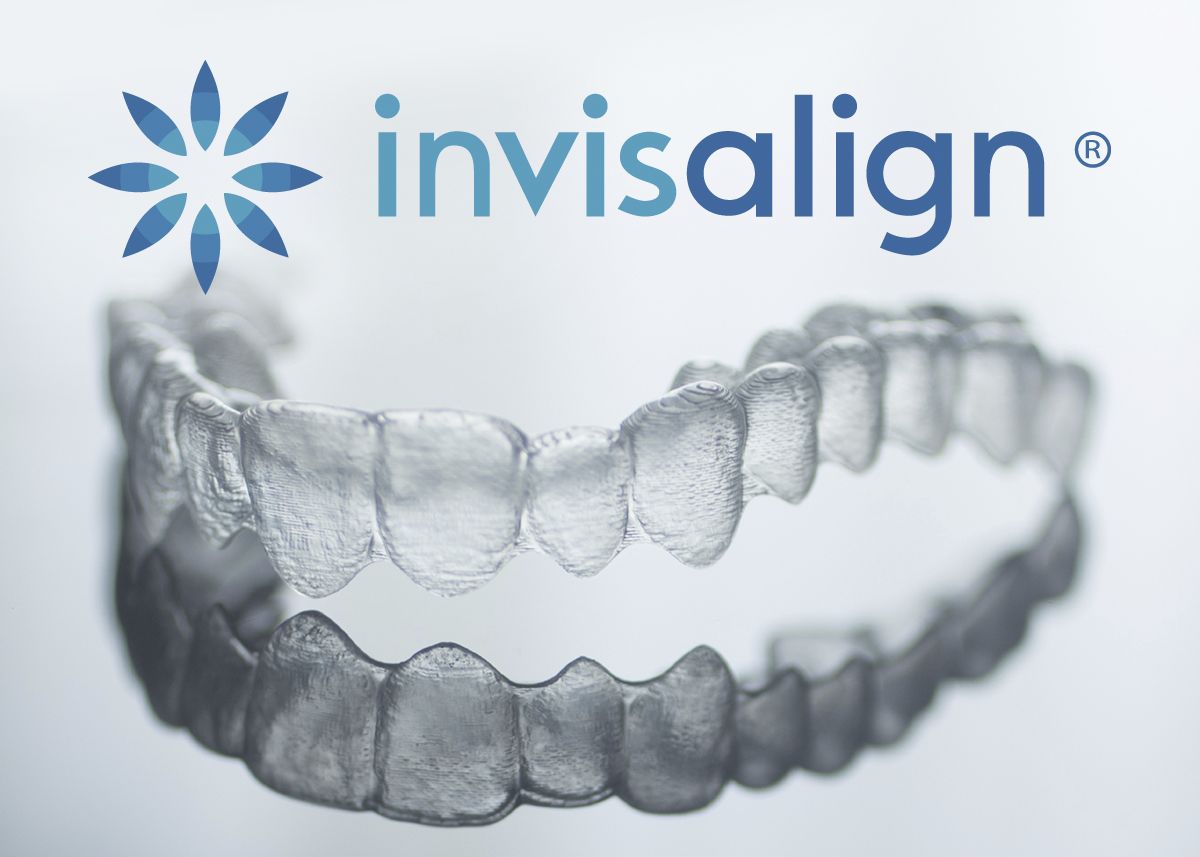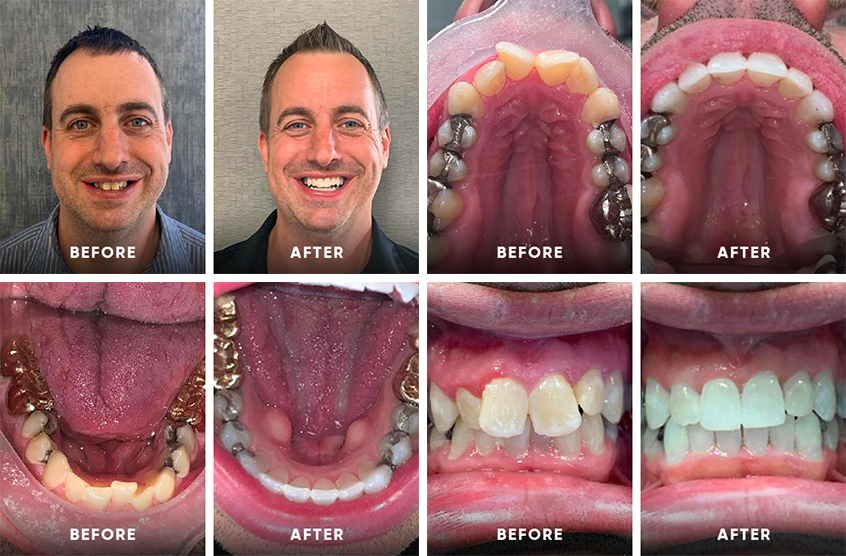The Ultimate Comparison: Invisalign vs. Traditional Dental braces for Grownups
The Ultimate Comparison: Invisalign vs. Traditional Dental braces for Grownups
Blog Article
Invisalign vs. Traditional Dental braces: Which Alternative Is Right for You?
When considering orthodontic therapy, the option in between Invisalign and traditional braces offers numerous important variables that merit cautious assessment. Invisalign provides a discreet alternative with removable aligners, while conventional dental braces offer a more visible yet efficient option for severe imbalance.
Review of Treatment Options

On the other hand, conventional braces consist of steel brackets and wires that are adhered to the teeth. This technique uses continuous stress gradually to attain placement. While reliable for complex orthodontic concerns, typical dental braces need normal check outs for changes and can position difficulties in keeping dental hygiene due to the problem of cleaning about braces and wires.
Both options have their advantages, and the option typically pivots on specific dental problems, way of living choices, and patient compliance. Ultimately, consulting an orthodontic specialist is critical for figuring out one of the most ideal therapy strategy customized to individual demands. Recognizing the subtleties of each alternative can significantly affect the total success of orthodontic therapy.
Aesthetic Factors To Consider
A significant variable influencing the selection in between Invisalign and typical dental braces is the aesthetic allure each treatment offers. Invisalign aligners are crafted from clear plastic, making them basically unnoticeable when used. This discreet appearance is specifically interesting grownups and teenagers who might feel awkward regarding their orthodontic treatment. The capability to maintain an all-natural smile throughout the positioning process can considerably improve the person's confidence in social and specialist settings.
On the other hand, standard braces include metal braces and cords, which can be extra obvious. While developments in orthodontic modern technology have actually led to the growth of smaller brackets and tinted elastics, conventional braces still maintain a more conspicuous account. For some individuals, the exposure of braces may deter them from looking for essential therapy.
Ultimately, the choice in between Invisalign and standard braces may pivot on personal choices concerning looks. Patients who focus on discernment typically favor Invisalign, while those who are much less worried about exposure might go with conventional braces. Understanding the visual implications of each choice is crucial for making an educated decision that lines up with one's way of living and choices.
Comfort and Convenience

In regards to comfort, Invisalign aligners are detachable, allowing patients to appreciate their preferred foods without restriction and maintain ideal dental hygiene. Brushing and flossing are simplified, as the aligners can be secured throughout these routines, whereas conventional braces require cautious steering around brackets and wires.
In addition, Invisalign's dynamic system permits fewer orthodontic gos to. People typically get several collections of aligners simultaneously, which can streamline the treatment process my site and reduce time invested in the orthodontist's chair. In comparison, traditional braces necessitate routine modifications, making them much less convenient for those with active routines. Invisalign. Generally, the comfort and comfort of Invisalign make it an enticing selection for several people seeking orthodontic treatment.
Treatment Duration and Efficiency
While both Invisalign and conventional braces work in dealing with dental misalignments, the duration of therapy can differ substantially between both alternatives. Generally, Invisalign treatment can take anywhere from 12 to 18 months, depending on the intricacy of the case. The clear aligners function by progressively changing teeth into their desired settings, and routine follow-ups with an orthodontist assistance make sure development continues to be on track.
On the other hand, conventional dental braces typically need a longer commitment, normally ranging from 18 months to 3 years. This results from their set nature and the use of wires and braces, which can be more reliable for intricate situations and serious misalignments (Invisalign). The treatment effectiveness of conventional braces is well-documented, as they enable specific modifications and higher control over More hints tooth activity
Eventually, the selection between Invisalign and standard dental braces may rest on both the expected therapy duration and the details dental issues at hand. Consulting with an orthodontist is important, as they can give customized suggestions based on specific requirements, ensuring the picked method lines up with wanted timeframes and results.
Price Comparison and Insurance Policy Choices
Expense plays a considerable role in the decision-making procedure for people considering orthodontic treatment, whether choosing for Invisalign or conventional braces. On standard, the expense of Invisalign arrays from $3,000 to $8,000, while traditional dental braces generally cost between $2,000 and $6,000. Variables affecting these costs include the complexity of the case, the period of treatment, and geographical location.
Many dental insurance policy plans give partial insurance coverage for orthodontic therapies, however the specifics can differ widely. Generally, traditional dental braces may be more regularly covered by insurance coverage strategies contrasted to Invisalign, which some insurance firms categorize as an aesthetic procedure.
In addition, numerous orthodontic practices supply flexible layaway plan, making both treatment alternatives extra easily accessible. Patients ought to inquire concerning possible financing options and discount rates for ahead of time settlements. Assessing the overall expense, including insurance policy advantages and settlement strategies, is important for making a notified choice that lines up with both aesthetic preferences and spending plan considerations.

Verdict
In summary, the choice in between Invisalign and traditional dental braces rests on several variables, including aesthetic preferences, comfort, treatment duration, and price. Invisalign offers a discreet, removable option that promotes dental hygiene and dietary versatility, while traditional dental braces might be better for complicated dental problems and commonly come with a reduced price point. Eventually, appointment with an orthodontist is vital to her explanation examine specific circumstances and identify one of the most suitable therapy alternative for attaining optimal dental positioning.
When taking into consideration orthodontic treatment, the selection between Invisalign and standard dental braces provides a number of vital variables that merit mindful evaluation.Comparing Invisalign and traditional braces discloses distinctive treatment options for orthodontic modification.While both Invisalign and conventional dental braces are efficient in fixing oral imbalances, the period of treatment can vary dramatically between the 2 alternatives.Expense plays a substantial duty in the decision-making procedure for individuals thinking about orthodontic treatment, whether opting for Invisalign or conventional dental braces.In summary, the choice in between Invisalign and typical braces pivots on multiple aspects, including aesthetic preferences, comfort, therapy duration, and cost.
Report this page